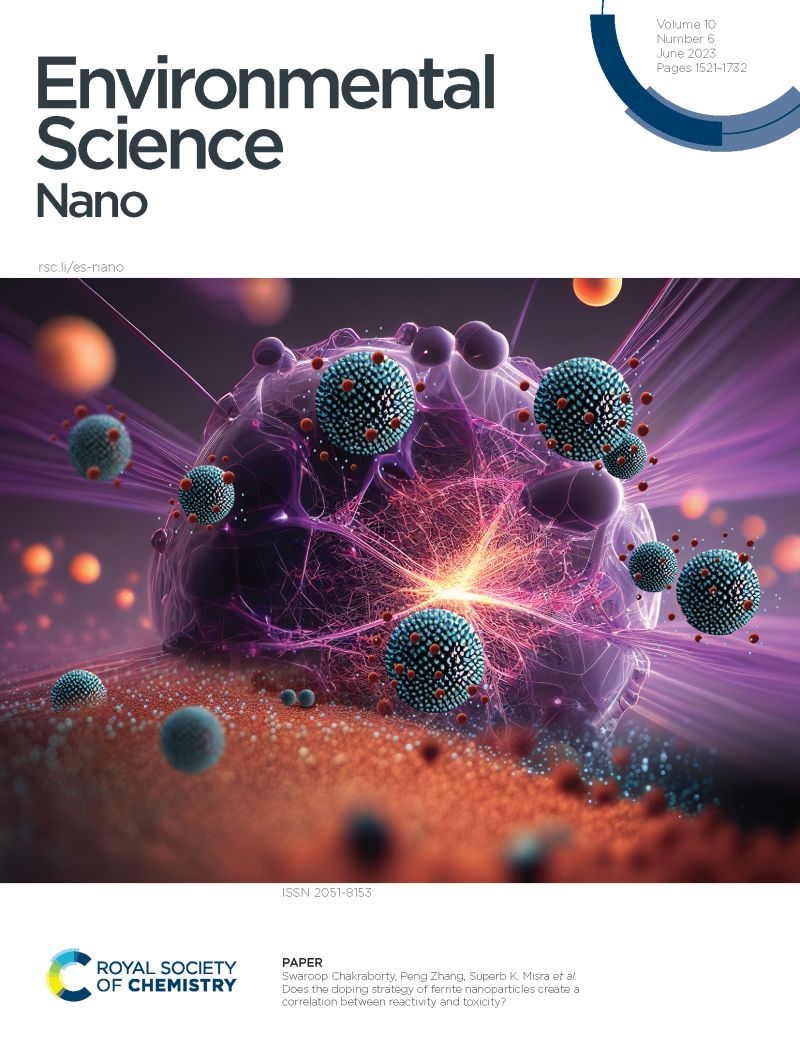Delivering metribuzin from biodegradable nanocarriers: Assessing herbicidal effects for soybean plant protection and weed control
IF 5.8
2区 环境科学与生态学
Q1 CHEMISTRY, MULTIDISCIPLINARY
引用次数: 0
Abstract
Several studies have reported improved weed control and targeted delivery of herbicides by nanocarriers. However, the effects on crops and non-target organisms need to be considered. Here, we investigate the crop and soil health treated with metribuzin in conventional and biodegradable nanoformulations (poly-ε-caprolactone - PCL and lignin-PCL) (both at 480 g a.i. ha-1). Weed control of Amaranthus retroflexus by the nanoformulations was also evaluated as a measurement of target delivery. Soybean plants did not show any differences in photosynthetic parameters and a slight oxidative stress with nanoherbicide treatment, with biomass reduction occurred at 60 days after application. The root accumulated metribuzin formulations and translocated to the aerial part for both plant species. The polymeric nanomaterials in the soil mitigated alterations in the bacterial community. Metribuzin formulations, mainly nanoformulations even at low dose (48 g a.i. ha-1) caused severe photosynthetic damage in the weed species, with reduction of chlorophyll content (up to 2.35 time) and electron flow (up to 9.22 times), leading to eventual mortality. MTZ nanoformulations presented a greater efficacy (even in 10-fold less dose) for weed control compared to conventional formulation. These findings suggest that MTZ nanoformulations improve weed control and attenuate the negative effects on crop and soil health, offering an important nano-enabled strategy for sustainable weed management.利用可生物降解的纳米载体输送嗪草酮:评估用于大豆植物保护和杂草控制的除草效果
一些研究报告称,纳米载体改善了除草效果并实现了除草剂的定向输送。然而,需要考虑对作物和非靶标生物的影响。在此,我们研究了在常规和可生物降解纳米制剂(聚ε-己内酯-PCL 和木质素-PCL)(均为 480 g a.i. ha-1)中使用嗪草酮对作物和土壤健康的影响。还评估了纳米制剂对反折苋的除草效果,作为目标输送的衡量标准。大豆植株的光合作用参数没有任何差异,纳米杀草剂处理会产生轻微的氧化应激,施用 60 天后生物量会减少。两种植物的根部都积累了灭草松制剂,并向气生部分转移。土壤中的高分子纳米材料减轻了细菌群落的变化。甲草胺制剂,主要是纳米制剂,即使是低剂量(48 克活性成分/公顷-1)也会对杂草物种的光合作用造成严重破坏,叶绿素含量减少(达 2.35 倍),电子流减少(达 9.22 倍),最终导致死亡。与传统制剂相比,MTZ 纳米制剂对杂草的防效更高(即使剂量减少 10 倍)。这些研究结果表明,MTZ 纳米制剂可提高杂草控制效果,并减轻对作物和土壤健康的负面影响,为可持续杂草管理提供了一种重要的纳米赋能策略。
本文章由计算机程序翻译,如有差异,请以英文原文为准。
求助全文
约1分钟内获得全文
求助全文
来源期刊

Environmental Science: Nano
CHEMISTRY, MULTIDISCIPLINARY-ENVIRONMENTAL SCIENCES
CiteScore
12.20
自引率
5.50%
发文量
290
审稿时长
2.1 months
期刊介绍:
Environmental Science: Nano serves as a comprehensive and high-impact peer-reviewed source of information on the design and demonstration of engineered nanomaterials for environment-based applications. It also covers the interactions between engineered, natural, and incidental nanomaterials with biological and environmental systems. This scope includes, but is not limited to, the following topic areas:
Novel nanomaterial-based applications for water, air, soil, food, and energy sustainability
Nanomaterial interactions with biological systems and nanotoxicology
Environmental fate, reactivity, and transformations of nanoscale materials
Nanoscale processes in the environment
Sustainable nanotechnology including rational nanomaterial design, life cycle assessment, risk/benefit analysis
 求助内容:
求助内容: 应助结果提醒方式:
应助结果提醒方式:


